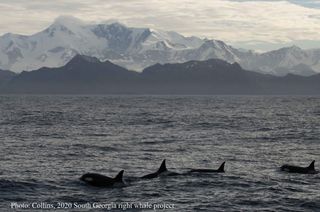World Largest MegaIceberg is on The Move With Over 1 MPH It Will Displace Sea and Land Species, Humans Last
 |
The trillion-ton megaberg was stuck in the ocean for nearly 40 years but, now it’s on the move. Although it’s creeping along at under 1.5 miles per hour per hour, some experts are worried about its potential impact on this wildlife haven.
How did the iceberg break free, how might it affect penguin and seal populations, and is this related to climate change? Here’s everything you need to know.
WHERE DID A23A COME FROM?
In 1986, A23a—icebergs are named sequentially based on the Antarctic quadrant in which they were first seen—calved from the Filchner Ice Shelf. Iceberg calving is the natural process of icebergs breaking off from the ice shelf, which happens all the time.
Recently, satellite images have spotted the berg (which now looks like a hand with one pointing finger) drifting directly toward South Georgia, a small, mountainous island that serves as the breeding ground for hundreds of thousands of seals and penguins. With a surface area similar to A68a’s, the island ecosystem could be seriously disrupted if the berg makes landfall. In addition to injuring animals during the collision, the iceberg's presence could block the normal feeding and foraging routes that animals use during their crucial chick- and pup-rearing seasons, Tarling said. "The actual distance [the animals] have to travel to find food (fish and krill) really matters," Tarling explained. "If they have to do a big detour, it means they're not going to get back to their young in time to prevent them starving to death in the interim."
There's still a chance that ocean currents could carry A68a around the island's coast rather than directly into it, Peter Fretwell, a mapping specialist with BAS, said in the statement. If that's the case, then the pups and penguins of South Georgia could even see some dietary benefits; according to Tarling, the vast quantities of dust riding aboard A68a could fertilize nearby ocean plankton, sending those nutrients up the food chain to fish, penguins and seals.
At just over 1,400 square miles, A23a could currently fill all of New York City, Los Angeles, and Houston combined. Because of its epic proportions, the behemoth “almost immediately got stuck” on the seabed
Comments